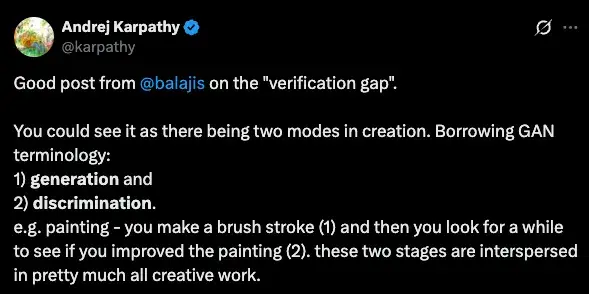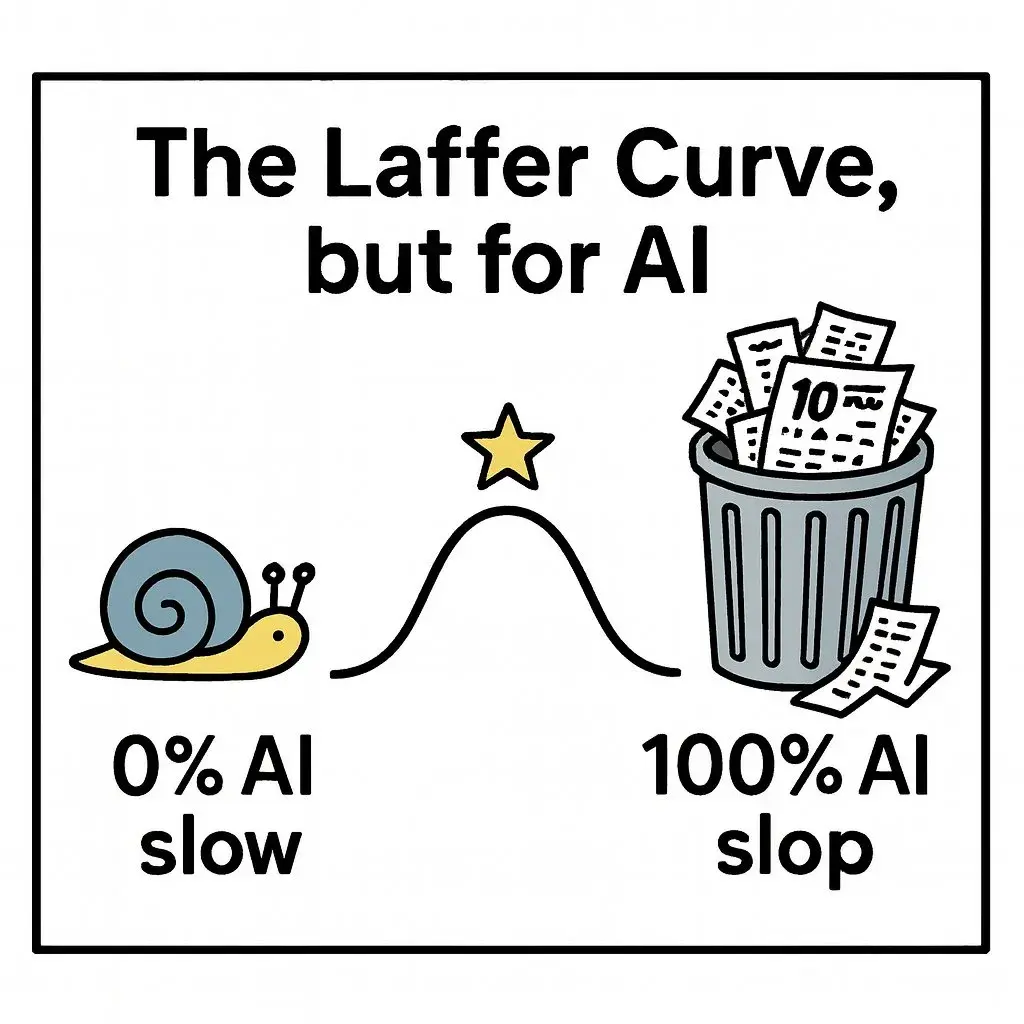Author: BALAJI
Translated by: Tim, PANews
Here are 10 thoughts on artificial intelligence that I personally find practical from an economic perspective. Let's get started.
First: There is no single universal artificial general intelligence (AGI), but rather multiple AGIs. In other words, what we are actually observing is a multi-modal coexistence of AI patterns (multiple powerful models coexisting), rather than a monotheistic AI (a single omnipotent model monopolizing). The current situation is that many models from different camps have reached similar capability levels, rather than a top model forming an absolute generational gap. Therefore, it can be anticipated that the future will be a variety of human-AI integration forms mutually balancing each other, rather than a single AGI dominating and turning all humans into paperclips (implying destructive control or punishment).
Currently, artificial intelligence shifts all costs to the prompt input and verification stages. Essentially, today’s AI only undertakes tasks from one intermediate stage to another, rather than an end-to-end full process. Therefore, even if artificial intelligence accelerates the intermediate stages, all business costs will still migrate to the two ends of prompt input and result verification.
AI is amplified intelligence, not artificial intelligence. Today's AI does not possess true agency awareness because it does not exist independently of humans. Existing AI systems cannot set complex goals nor effectively verify output results. Humans still need to expend a lot of energy on setting goals, verifying outputs, constructing prompts, and system integration, which means the smarter the user, the stronger the AI's intelligence amplification effect. Therefore, it should essentially be referred to as amplified intelligence rather than artificial intelligence.
AI will not take away your job; rather, it enables you to engage in any work. It makes you a barely competent UX designer, a decent visual effects animator, and so on. But this does not mean you can truly excel at the job, as the final polishing often requires professionals to complete.
AI does not replace human jobs; it replaces the jobs of the previous generation of AI. For example, Midjourney replaced the work of Stable Diffusion, and GPT-4 replaced the work of GPT-3. When you hand over a specific task (such as image generation, code writing, etc.) to AI, you only need to allocate the budget to the latest model. Therefore, it is always the new generation of AI that replaces jobs.
AI is better at visual expression than text expression. In other words, AI has an advantage in front-end development over back-end development, and it excels in image and video processing compared to text processing. The reason is that user interfaces and images can be easily verified by the human eye, while large amounts of AI-generated text or code require significant human resources for verification.

Lethal artificial intelligence has already arrived on Earth, and it is drones, the "killing species." Every country is pursuing this technology. Therefore, what we really need to worry about is not image generators and chatbots.
AI is probabilistic, while cryptography is deterministic. Therefore, cryptography can balance AI. For example, AI can crack CAPTCHAs, but it cannot forge on-chain balances. It can solve some equations but cannot solve cryptographic equations. Thus, cryptography generally represents things that AI cannot do.
From an empirical perspective, AI is promoting decentralization rather than centralization. The current decentralized effect exhibited by AI is undeniable: on one hand, it stems from the coexistence of numerous AI companies, and on the other hand, it is due to the capability leap that small teams can achieve with the right tools, further fueled by the continuous emergence of high-quality open-source models.
The optimal proportion of AI technology is not 100%. After all, 0% AI operates slowly, while 100% AI becomes garbage. Therefore, the ideal proportion of AI is actually between 0% and 100%. The specific value certainly varies by situation, but it is important to understand that neither 0% nor 100% is the optimal solution; this is the Laffer curve in the field of AI:

Today's AI is Limited
In summary, fundamentally, this is a limited AI model, not an all-powerful AI model.
AI is limited in economic efficiency because each API call is costly, and competitive models are emerging endlessly.
AI is limited mathematically because it (provably) cannot solve chaos, turbulence, or cryptographic problems.
AI has practical limitations because it requires human prompts and verification, operating in an intermediate layer manner rather than an end-to-end complete process.
AI is physically limited because it still requires humans to first perceive the environment and input this information through prompts, rather than AI autonomously collecting environmental information.
It is clear that these limitations may potentially be overcome in the future. Someone may be able to unify the probabilistic thinking of artificial intelligence with the deterministic and logical thinking of traditional computers, but currently, this remains an open research question.
免责声明:本文章仅代表作者个人观点,不代表本平台的立场和观点。本文章仅供信息分享,不构成对任何人的任何投资建议。用户与作者之间的任何争议,与本平台无关。如网页中刊载的文章或图片涉及侵权,请提供相关的权利证明和身份证明发送邮件到support@aicoin.com,本平台相关工作人员将会进行核查。




